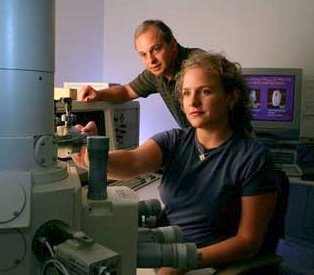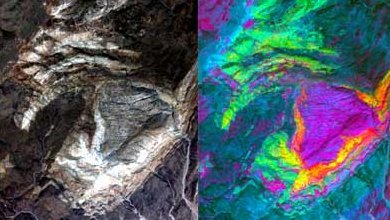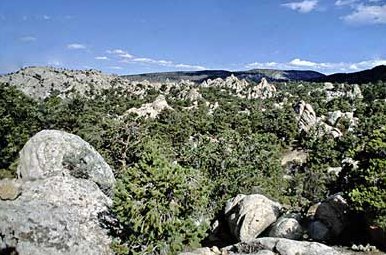The radioactive decay of the rust-coloured mineral monazite can help scientists synchronise their geological clocks thanks to work carried out at New York’s Vanderbilt University. Microscopic crystals of the material act as tiny clocks allowing a date to be stamped on rich ore deposits in rock formations altered by high-temperature fluids.
Monazite crystals contain thorium, which is radioactive, Vanderbilt’s John Ayers explains. Thorium decays into lead. So, by measuring the ratio of thorium to lead we can date a crystal’s age. What we have shown is that monazite dissolves readily in high-temperature fluids, resetting its radioactive clock. This means it can then be used to date areas altered by hydrothermal activity. Such a geological timer is important because geologists have difficulty detecting and characterizing areas that were affected by hydrothermal action millions of years ago. The fluids involved have usually disappeared and the minerals they leave behind can be hard to identify and cannot be used to determine the date when they were altered.

Ayers and Loflin scanning microscopic monazite crystals (Credit: Vanderbilt University)
Ayers and Calvin Miller of Vanderbilt working with Mark Barton from the University of Arizona, Tucson, and Christopher Coath from the University of Bristol, UK, have confirmed the date of monazite crystals more than a half kilometre from the Birch Creek intrusion in the White Mountains of eastern California and found that they agree with the 500 million year age of the older sedimentary layer. The rock’s oxygen isotope ratios differed markedly from those of crystals within the granite itself and within 500 metres of the area. In contrast, they report that the age and the isotopic composition of the crystals within 500 metres of the intrusion have dates and isotope ratios identical with those within the granite.
Monazite’s characteristics mean it could be used to date plutons, areas surrounding intrusions of molten rock that solidify below the surface, which could help in the location of rich metal-ore deposits. The crystals could also be useful in dating earthquake fault zones providing clues as to when the last quake occurred on a particular fault. Additionally, the crystals could provide dates for ultrahigh pressure terrains, the geological areas created when continents collide.

The Bird’s eye view of Birch Creek Pluton, California, and computer enhanced image (Credit: Patrick Kozak)
Ayers’ and his colleagues’ results confirm the validity of monazite crystals in identifying and obtaining dates for previously untenable rocks altered by hydrothermal events. However, geologists will have to reinterpret results based on the assumption that monazite was not affected by hydrothermal events.

Worm’s eye view without enhancements (Credit: Miranda Loflin)
Further reading
Dr. John C. Ayers
http://www.vanderbilt.edu/ees/johncayers